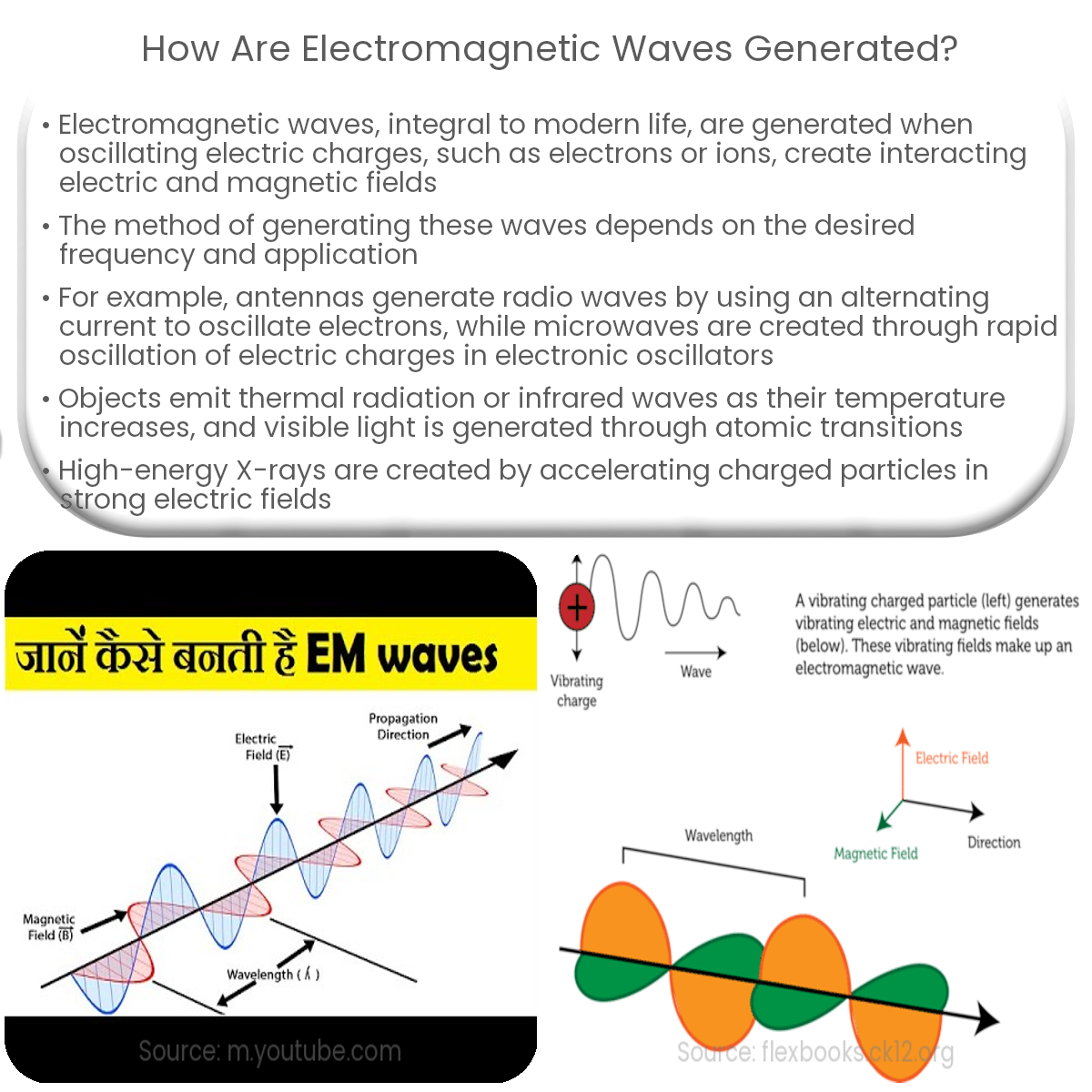Electromagnetic waves are created when electric and magnetic fields interact with each other. The key to generating these waves is the presence of oscillating electric charges, such as electrons or ions.
How Are Electromagnetic Waves Generated?
Electromagnetic waves, including visible light, radio waves, microwaves, and others, are fundamental to many aspects of modern life. But how are these waves generated? This article delves into the process of electromagnetic wave generation.
Electromagnetic Waves and Oscillating Charges
Electromagnetic waves are created when electric and magnetic fields interact with each other. The key to generating these waves is the presence of oscillating electric charges, such as electrons or ions. When electric charges accelerate, they produce oscillating electric and magnetic fields that propagate through space as electromagnetic waves.
Methods of Generating Electromagnetic Waves
There are several ways to generate electromagnetic waves, depending on the desired frequency and application. Some common methods include:
1. Antennas and Radio Waves
Radio waves, which have relatively low frequencies, are typically generated using antennas. An alternating current (AC) is applied to the antenna, causing the electrons within the conductive material to oscillate back and forth. This oscillation generates electromagnetic waves that radiate outward from the antenna.
2. Electronic Oscillators and Microwaves
Microwaves have higher frequencies than radio waves and are commonly used in communication systems and microwave ovens. Electronic oscillators, such as Gunn diodes or klystrons, generate microwaves by causing a rapid oscillation of electric charge within the device. This oscillation produces an alternating electric field, which in turn generates microwaves.
3. Thermal Radiation and Infrared Waves
All objects emit thermal radiation, which consists of electromagnetic waves in the infrared region of the spectrum. As the temperature of an object increases, the motion of its atoms and molecules also increases, causing the electric charges within the object to accelerate. This acceleration generates infrared waves that radiate outward from the object.
4. Atomic Transitions and Visible Light
Visible light, which is part of the electromagnetic spectrum, is generated through atomic transitions. When an electron in an atom absorbs energy, it moves to a higher energy level, or excited state. When the electron returns to its original, lower energy level, it releases energy in the form of a photon, which is an electromagnetic wave. This process is responsible for the emission of visible light by atoms in objects like light bulbs, flames, and stars.
5. Accelerators and X-rays
X-rays are high-energy electromagnetic waves generated by accelerating charged particles, such as electrons, through strong electric fields. In devices like X-ray tubes, electrons are accelerated toward a metal target. When the electrons collide with the target, they rapidly decelerate, emitting X-rays in the process.
In conclusion, electromagnetic waves are generated through various processes, all of which involve the acceleration of electric charges. The resulting oscillating electric and magnetic fields propagate through space, creating the diverse spectrum of electromagnetic waves we encounter in everyday life.


